
|
| Accept Cookies | Customize | Refuse Cookies |
Luca Donegà www.juzaphoto.com/p/LucaDonega  |
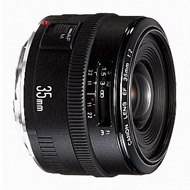 | Canon EF 35mm f/2.0 Pros: Small, light, discreet, very good image quality Cons: AF slow and noisy, lacks the ability to manually correct focus without releasing the AF Opinion: This 35 f2 offers a great compromise between brightness and size/weight, and makes you forgive some limits with a good optical yield. It is very small and discreet, and allows you to photograph without giving in the eye. The yield is overall satisfactory: already good at TA, better in this of the brother 50 1.8 old that instead softer part, becomes very good from f 2.8 to f 5.6. The newly opened ARSATs do not make you cry out for miracle, but working on it you understand that the detail is there, it just lacks a little microcontrast. With a minimum of sharpening adjustments the images become detailed in a similar way to the 50 1.8 (closed from 2.8 to 5.6), and not far from the 85 1.8 (which however does not require practically sharpening increments). Very correct, not distorting and vignette little, speeding up the work of pp. On the field the greatest limit is the first generation AF, noise (triiik triiik...) and not very fast, especially if the starting distance is quite different from that of focus, where it can happen that it also does one or two bottom run before "understanding" where to stop. On the other hand, the sealing is precise, and no one is thrown away because it is out of focus. Overall I like it and use it willingly, and in addition it cost little. I recommend it and as a vote I do 9. sent on January 21, 2020 |
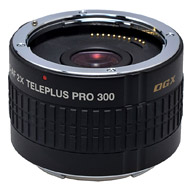 | Kenko Pro 300 DGX 2.0x Pros: Quality, value for money, compactness, discretion Cons: Accentuates the difference in yield between the various aperture diaphragms multiplied (but perhaps it is normal) Opinion: I took it almost for gaming, in a well-known but trusted site, much less than the amazon price shown on the card. Otherwise I do not understand why it's relegated to out-of-production: it's still on the Kenko product page, as "premium 2.0x", while the HD DGX is referred to as "standard 2.0x" and is on the net new and available a little everywhere. Open and tested in the evening at home, on my 200 2.8 L old, for which I mainly took it: so terrible conditions for a first try, a 400 f5.6 equivalent in poor artificial light .. instead, already here and for this reason I immediately gained my favors. The AF is kept fine, certainly with little light and close distances, the AF can lose the bandwidth and make a couple of end of stroke. If the subject is not completely out of focus, focusing is quick and accurate as without the 2x . This is confirmed by the evidence then made in optimum light,Coupled 200 2.8 and 2x telescopes always get well and quickly the distance even close to the minimum, 1.5m, where the resulting 400mm becomes almost a macro. The machine (5d2 in my case) recognizes the lens, as if 2x was not there, but also automatically doubled the diaphragms, 2.8 to 5.6 and so on. RnThis is very advantageous because it means that functions are maintained they assume target recognition (vignetting correction, digital objective optimization, distortion, etc.) but at the same time there is no risk of error in the opening. rn I still could not verify if it actually loses less than 2 stops in true brightness, just I can eventually update it. The rendering seems great! To honestly, by comparing successful shots (correct focus and no microrose) at f5.6, f8 and f11, you can see that the 2x telescope slightly accentuates the difference between f2.8 and two stops following in the non multiplied objective. Result: While the 200 2.8 smooth af 2.8 & egravis; already very good, and gets great at f4 and excellent at f5.6, once doubled with this Kenko the goal becomes good at TA (= f5.6), certainly acceptable in the middle but a little less incisive than the self itself , and a soft thread at the edges, while at f8 and f11 the yield returns really great and excellent as the lens does not multiply, over the entire frame. Already in f6.3 - f 7.1, there is an improvement. In fact, I expect that I will use it mainly at f8, where the bottom off is still nicely, and the blur remains very nice. In contrast to the smooth optics, they dance at 3 speeds: 2 for the relative opening halved, and one for double focus. Inevitable then have to resort to 640-800 iso even in daylight. I imagine that with a stabilized canvas is another life. The Kenko 2x adds just over 40mm of boss and about 200g of weight, so, to say, my "400" f5.6L does not reach 18cm from the junction ( without haze), and is of a pelor under 1000gr without plugs: we are well below the 26cm and 1250gr of the compact yet 400 f5.6 "true". Okay, the current Sigma and Tamron 100-400 stabilized are just a little bigger and more heavy than my 400-kit, and they offer the versatility of zoom and stabilizer. However for me the advantage is in the bag, in addition to the excellent 200 f2.8 L (which renders the above zoom if they dream), if necessary a 400mm f5.6 of quality. All for just over 100 euros (with the 350 spent for the 200 f2.8 used yet I do not arrive at 500 in all ...) and with just 2 more on the bag.rn Chromosome then, and recommended! Ciaorn sent on November 21, 2017 |
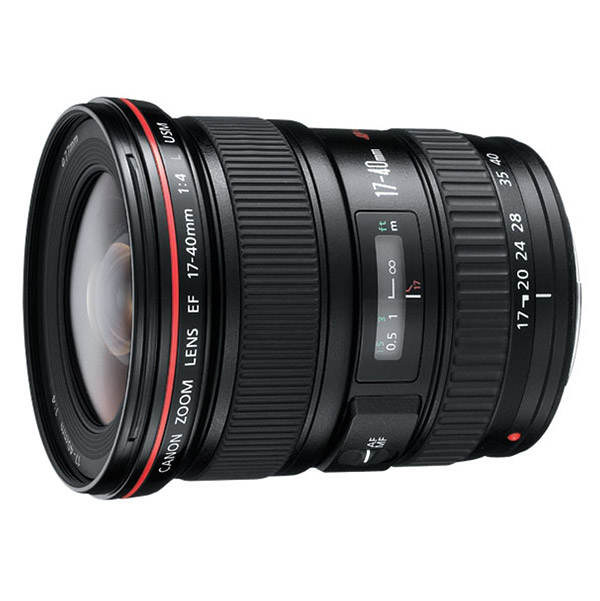 | Canon EF 17-40mm f/4.0 L USM Pros: Optical quality, construction, low weight, price / quality ratio Cons: shades of colors that for my taste needs to be a little "heated" Opinion: Now that I have tried it thoroughly (on FF), the first thing that I have to say is: do not be fooled by the price! Build quality and optics are really good, and the purchase of a used specimen in good condition may prove to be one of the best purchases in a Canon EF kit. The construction is accurate and sturdy, the ferrules are very fluid but stable, and in an ergonomically comfortable position, so better in all respect - for example - those of the excellent 24-70 f4 L IS. The front part does not come out of the barrel, but moves (slightly) inside it: the lens therefore does not vary in length in the zoom range. However, the small space between the moving part and the barrel wall makes it advisable to use a (slim) filter to prevent dust from entering. The sharpness in the center is amazing on the whole excursion and all the diaphragms; the edges are a bit weak at full aperture, but I found them much better than some reviews made meno fear! In fact, in fact, they are not so sinful at f4, and become very resolvable to f8-f11, that is precisely to the diaphragms most used in a zoom like this. At the maximum focal length (40mm) and at f11 the extreme edges of the frame leave speechless. rnThe purple fringing is lurking, and photos taken with this lens are very beneficial, for this, the AC correction in Canon DPP.rnThe flare is incredibly absent even in photos with sun framed or partially hidden. rnThe lens hood is very cumbersome, and I think it also serves very little, so in my case it remains the default at home.rnThe colors are quite saturated, and true to reality, but I found myself often to make them warmer with the manual adjustment of the WB at a computer; comparing the 24-70 f4 L IS is already hotter than his.rnThe lack of stabilizer benefits from the compactness and lightness of the optics, and is not in my opinion a big limit, given that the focal lengths in play and a minimum of craft is still possibleshoot at 1/15 at the minimum focal and at 1/30 at the maximum without risk of blur. In conclusion, I highly recommend this goal, which is certainly one of the "L" most accessible and with the best quality / price ratio. sent on October 13, 2017 |
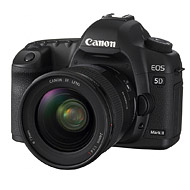 | Canon 5D Mark II Pros: Construction, solidity, completeness of functions, aesthetics Cons: in my opinion no one if you don't pretend to compare it with the even range models just released Opinion: I looked for it and took it almost out of necessity, to solve with the microregulation af the back focusing that some of my goals presented with the 5D old. With the switch to mk II I discovered many things: compared to the 5d old, the BF was almost absent on the 50 f1.8, less marked on the 24 f2.8, and instead much more pronounced with the 85 f1.8; in all cases, adjusting in +/- 20 steps is largely sufficient to solve any back or front focusing problem you may run into; the sensor of the 5D mkII, in any case, enhances the yield of the 85 f1.8 and 50 f1.8, as if its higher density allowed lens resolution to express itself better. I wasn't interested in live view, but I found it very useful in the fine MAF in macros instead. The menu is better organized and much more complete than that of the old 5D. I don't do sports photography, in-flight bird photography or airplane photos, so I don't feel the limits of the AF, which I find appropriate for my needs. I recommend buying it to all those who, interested in the genre (reflex FF not recent but in step with all the most modern functions), find one in good condition and with a few shots on the 7-800 euros or, lucky them, less. EDIT 10/11/2017: the shadow opening worsens (= more noise) as the ISOs set decrease; if you expect the shot to require a push opening of the shadows (e.g. very contrasted scene), it is better to avoid the lower ISOs, and set from 400 ISOs up. Hello sent on August 31, 2017 |
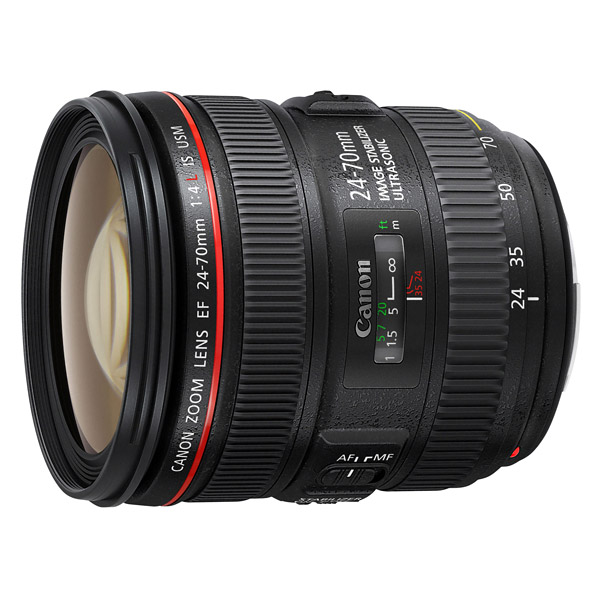 | Canon EF 24-70mm f/4 L IS USM Pros: Sharpness, construction, macro, stabilizer Cons: vignetting, "noise" of the stabilizer if left inserted when not needed Opinion: The lens looks like a real L, even if the barrel is made of plastic: the construction is cured, robust, the ferrules are fluid and free of play, the front does not move inside the barrel (the 28- 135 in this is just a bad memory ...), the bayonet is equipped with anti-dust seal. The sharpness is very high throughout the excursion, in the middle really excellent already at TA, very good edges at TA, and improves to almost equal the center closing one stop. The distortion is very low at 24 mm, it resolves almost completely at 28 and is absent at all other focal lengths. What I did not expect, especially considering the relative opening certainly not extreme but "conservative", is the vignetting at the lower distances of MAF (let's say up to 5 meters), really showy at full aperture at all focal lengths. It is clearly linked to the internal movements of the lenses with the focus, because it is instead absent allinfinite and imperceptible to intermediate distances. It is also curious that it is much more contained in macro function: obviously the lens shift that occurs in this setting compensates in a similar way to infinity focusing. The colors are saturated as per standard Canon, and the contrast is robust even if not exaggerated, leaving margin for increments in PP without burning the highlights. The stabilizer is great, allows you to shoot without hesitation at 1/6 second at 70mm, even at 1/2 second at 24mm, the image "stops" already in the viewfinder, and this is ideal for video. However I have noticed that often the shots made with times that would not require the stabilizer (eg 1/80 or less at 70mm), but with the same inserted, are a little 'less clear than those performed without the stabilizer. When not needed, it is better to deactivate it. The macro function allows you to get very close to the subject, and the maximum magnification is quite strong (0.7x); the only oneinconvenience is that approaching so much you risk to scare and make the subject away (typically insects), or touch leaves and / or petals, if it is flowers. The blur is very soft and pleasant also diaframmando.rnWhen this lens came out on the market the recurring question was what was its meaning, given the presence of a 24-70 f2.8 L and 24-104 f4 L is, and the launch price close to that of the first and even higher than the second. Now, however, its positioning is correct and its meaning is clear: it costs less than half of 2.8 II, and a 20-30% less than 24-105 II; it is more compact and light than both of these last ones (even if with the 2.8 II Canon has made a good progress, in this); has the 4-stop stabilizer, like 24-105, but absent on 2.8; is the only one of the three to have the macro.rnAGGIORNAMENTO function after a month of intense use. I confirm the high yield on the whole excursion and already at full aperture. It is an obiettruly ultra-clear, with incredible peaks on minute details at optimal distances, e.g. eyelashes, wrinkles, hair etc. in portraits, both in the foreground and in 3/4 or full-length. Its best diaphragm is f5.6 at all focal lengths, but the drop at edges also at f4 is limited and very marginal, in fact only perceptible at the extreme edges of the frame. I confirm the excellent efficiency of the stabilizer, but also that it is better to deactivate it when the shutter speed fast enough does not require it. The only thing I do not like and perplexes me is the vignetting, which appears apparently random, even at f8, in particular at 24mm; but the other focal lengths are not exempted as well. Analyzing the shots that are affected, I understand that it is a problem related to the distance of MAF, and therefore to the position of the optical group dedicated to it within the lens. It happens therefore that the vignetting, with the same diaphragm, is absent in some shots, and appears instead in others, depending on the distance of the point of MAF of each.It is true that the defect is quickly resolved in PP with the dedicated application, however I am disturbed by those shots with the four corners much darker, with a drop of light marginal and sudden that makes you think about a goal that "is framed alone ", or a wrong lens hood. Canon is well aware of the thing, in fact with the Canon DPP software and lens specific data downloaded the defect is completely eliminated in PP even in the most extreme and annoying ... sent on August 02, 2017 |
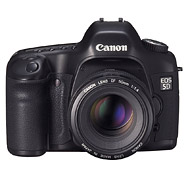 | Canon 5D Pros: Valid, robust and well-built Cons: Lack of fine AF adjustment Opinion: It is the machine to which I must return to the Photography with the capital F, after years of pause followed by the abandonment of the film, so I will always be debtor in regard to this "dirty" digital jewel, which with 450 euros, Grip two years ago made me rediscover the pleasure of photographing, using all my old lenses with their actual focal length. Beautiful, robust, heavy the right, professional at all, at least how much it could be a car designed in 2005, and in my opinion capable of producing still stunning files today, which is incredible considering the very rapid obsolescence of digital bodies and progress made in Industry over the last 10 years. The 12.7 mpx is more than enough for almost any need, focusing with the center point is still in step, noise is almost absent up to 800 iso, and no annoying up to 1250 iso; Even nice, if looked for in certain situations, because it is like the grain of 800 iso ormore. The limit in this comes in my opinion on the 1600 iso, which are already an emergency sensitivity, while the 3200 consider them in fact unusable. However, it should be considered that the actual sensitivity is greater than 20% higher than the rated one, so the 1250 iso ratings correspond to almost 1,600 actual isoes (source: AllFotografi December 2005). The only true limit for me, which I Finally, it is the lack of fine AF adjustment: in fact the coupling with my old 24 f2.8 and 50 f1.8 gave, especially with the former, a rather marked back focusing, so as to force me to focus intentionally On a point closest to the subject. The solution, however, was empirical and obviously uncertain in the results, also because the relatively small and low resolution monitor does not help to properly evaluate the correct focus, which I actually only checked at home once on the monitor. An intervention in the room service was concernedNecessarily all the kit, and a cost of 150-200 euros, however, not final in the case of purchasing other optics. So I chose to go to the 5D MkII, although I'm sorry to have surrendered my 5D Old, either because the figure I sold it does not repay me for what I lost, or because I was very fond of this car, And I keep wondering if it would not have been wiser to keep it as a second body ... sigh! sent on August 02, 2017 |
 | Canon EOS 50E / Elan II Pros: Beautiful and robust Cons: Dust build up inside the viewfinder Opinion: It was the machine with which I grew up photographed speaking. After my first reflex, the Eos 1000F, the 50E was a dream come true. Beautifully aesthetically, with retro style settings, and modern, technically advanced, with the pupil-controlled focus and all the settings needed for professional use (the only limit in this is the minimum time of 1/4000 and the flash sync to 1 / 125), he has always supported me in all of my "expeditions" until 2008, when the film obsolescence and the progress of digital has put me in the showcase, where she still has a fine show of self. The dedicated grip can also work with 4 rechargeable and non-rechargeable battery batteries, which lasted for weeks: practically there was never a risk of being left without energy. There was only one problem with the breakage of the back: 50 euro repair and A roll gone.rnGreat machine, great memories ... sent on August 02, 2017 |
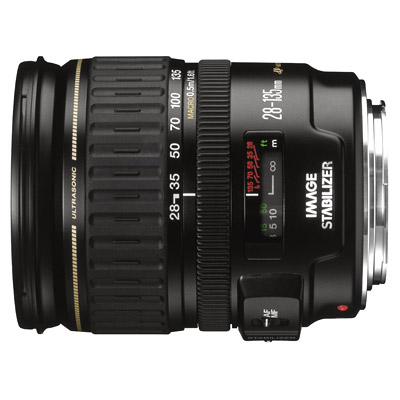 | Canon EF 28-135mm f/3.5-5.6 IS USM Pros: Versatility Cons: Optical and constructive quality Opinion: In the end, I recount it after giving it away for lack of use, due to the qualitative limits of the images it is giving. It is an optic that might have a sense on the film, in which (although final) was designed: very few potential buyers A non-professional and handymanlike lens like this would have focused on looking at the frames with the magnifying glass, and the versatility given by the broad focal range, the stabilizer and the internal USM MAF could therefore effectively represent predominant factors in evaluating the Lens for this kind of users (of which I also belonged in all respects). Digital digital instead, especially if in FF, the optical limits prevail over any other evaluation, and it is a fact that the distortion, pronounced at barrel To 28mm and 135mm bearing, vignetting, 28mm to TA and also present with a diaphragm closure, and especially sharpness to the edges, really mo It is all about the focal, and sometimes embarrassingIn some situations, because linked to a clear spherical aberration of the MAF plane, they do not allow the sharpness at the center of the image, generally good and even good around the 50mm, to improve a totally negative judgment. The photos taken are in fact immancabilmente afflicted now from one, now on the other, now from all the listed defects, with the aggravating of a blur nervous and unpleasant in diaphragmatic shots, because of the only 6 lamella from the straight edge Rather than rounded. Finally, every time (ever more rare after purchasing the Eos 5D) that I was forced to use this goal, I was then able to count on more or less unsatisfactory images on the quality level, so much to make me think "Acci ... if I did this with 24, with 50, with 85 ..." rnThere is nothing to do: since, with the advent of digital, the detailed view Is at the reach of everyone (magnificationTo 100% on a good monitor), this optic in my view has lost its reason to exist. Much more if you consider the qualitative abyss that there is compared to the very much more expensive zoom, you want on the new you want on the used.rn plasticine and ballerina construction, with the front part of the lens that moves in millimeters inside The barrel, and the continuous buildup of dust between the inner lenses, strident with aesthetic and somewhat pretentious sizing, complete a really bad picture for me. I left it without any regrets.rn sent on June 30, 2017 |
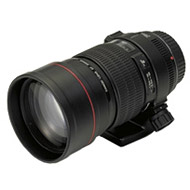 | Canon EF 200mm f/2.8 L USM Pros: Sharpness, blur, lightness and compactness to be a 2.8 Cons: There is no stabilizer, but it is a "posthumous" Opinion: Aim of great satisfaction, use and results. I was looking for the first version (1991), a bit because I fixed the dated lenses, a bit because I prefer the appearance and the bayonet lenses, compared to those of the second version. I replaced it with a Sigma Apo-macro 70-300 f4-5.6, and my early embarrassment on switching from a wide-range zoom to a fixed optic fade away immediately after the first use on the field.rn Sharpness And the overall yield are really good too at TA, even at the edges, and they are excellent at f4-5.6-8. All this is accompanied by saturated colors, distinct three-dimensionality and blurry beautiful, soft and creamy, even diaphragmatic. Absent distortion, and very small f2.8 vignetting, which disappears at f4, complete a picture to say the least flattering. The construction is solid, metallic, and there is a dedicated tripod bracket. A real L, in short, you can not wait to be able toAre, and with whom I brought home some of my best shots. Absolutely, I need a medium-sized canvas, I put the 85mm f1.8, for tighter shots this 200 covers most of my needs, and renounces it Practicality and excursion terms compared to the Sigma 70-300 is really nothing compared to the quality of the shots you make, which is right on another planet. It's enormously smaller and lighter than 70-200 f.2.8 (in each version ), The same as the maximum aperture and focal length, and is even smaller than 70-200 f4, with a similar weight (less than 800g including the hood, which is incorporated); I also like the fact that it is more discreet and less palerable than the brother's variable because of the black color (the only EF L non-white cloth ever produced). Also, the budget you bring to your home is really modest (I've spent 350 euros), much more if you consider that the results are just as good quality as the quoted zoom. For a priBut series, like mine, the problem is - ultimately - finding one, and in good condition: well, look for search, I've found it! And it does not succumb to it anymore. It is a shame that it is not free to enter some gap between the lenses. There is only a real limit on the lack of stabilizers, but in 1991 they had not yet invented it (in this sense it is a "posthumous defect "). In essence, once you reach the limit of f2.8 - 1/200, touch up with the ISO, or use a solid support point. Everything else, it's joy! Rnrnrn sent on June 30, 2017 |
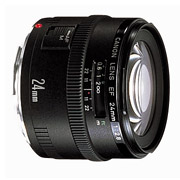 | Canon EF 24mm f/2.8 Pros: Quite clear, imperceptible distortion, controlled vignetting, is small and light Cons: Colors less saturated than other Canon, and a bit cold, loud noises Opinion: Taken used many years ago, it gave me great satisfaction and opened a world on film. I did some trips with me only this 24 f2.8 and 50 f1.8, with my trusted Eos 50E (prehistoric!). The Eos 5D Old has been heavily penalized by a rather marked back-focusing, which in practice has led me to limit its use to closed landscape diapers (f8-f11). The problem is fortunately solved with the 5D MkII, on which the BF was immediately revealed to be more content (mysteries ...) and in any case it was totally correctable with the micro-regulation AF (-7, and now it's perfect). Loved just now, like 50 f1.8, because of the Lilliputian dimensions, which make it stand in a pocket and when you mount it on the car many look at you strange as if missing something. Unlike 50, however, necessarily requires the hood (its dedicated is petals, very nice), which reduces its punctuality. The yield is already discrete in TA, where it is actuallyUsable, although the best comes to f4, where the engraving is really great, as well as f5.6, where they further improve the margins. A f5.6-f8-f11 detail at a frame angle (if not completely out of focus) on 100% pc monitors looks as sharp as those in the center of the frame. In fact, the best quality of this Objective is the uniformity of rendering and the excellent correction: the distortion is virtually imperceptible (not bad for a 24mm designed almost thirty years ago ...), and it is surprisingly limited also the vignetting, already in TA, so that it disappears Totally f4rnThe AF is dated, slow and noisy (cric-tic), but for me this is not a problem. RnPace for color rendering, visibly less saturated and somewhat cold than Canon standards (in fact It may depend on the front lens, which is visually slightly blue), which according to my tastes forces me intoPlan to PP on this aspect in almost all shots. How do I vote for 9 and not 10 for this, and how much did I make back-focusing with the 5D mkI: I was used to focusing on a point closer than the subject ... rn sent on June 28, 2017 |
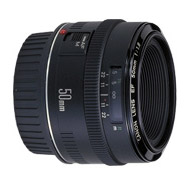 | Canon EF 50mm f/1.8 (1987 version) Pros: Sharpness, construction, is small and light Cons: blurred, nervous, loud noises Opinion: I used it a lifetime ago, almost by chance and for a few tens of euros. Only then did I realize I had to be a proud owner! It is far more difficult to find the successor (version II), and much better constructed: metal bayonet, distance windows, true manual MAF ring, in short, there is no comparison in the level of visual and tactile satisfaction. But it is in the optical rendering that this mini-lens amazes: I find it incredible that a project designed thirty years ago for the film can give today, on digital, similar results. And not only with no reverential fears towards more recent and high-end goals, but often even beating them! The rendering to TA is truly modest, and is accompanied by a vignetting, as is common to the optics with this maximum aperture: the use at f1 .8 is, in fact, limited to cases where deliberately a vintage effect is sought, accentuated by the detachment of planes very marked by the minimum depth offield, and blurry, which is so soft and pleasant in that case, because the lens uses the perfect circularity of the hole left free from the diaphragm. But just close to f2.5-2.8 to make the vignetting disappear almost and, above all, see the solution already on very good levels at the center and good at the margins. f4 The sharpness and the center-edge uniformity leaves you speechless, and f5.6 reaches a simply incredible peak across the entire frame. The yield remains gorgeous at f8 to decrease, but not drastically, only minute, such as eyelash, hair, wrinkles, grass bands etc., are returned to the native raw with an engraving which seems to have already been processed with sharpening in PP.rnThe distortion is completely absent.rnOnly you can not have everything from life, and in fact the limit of this goal is the rather nervous blur, and the only 5 lamella diaphragm, which in certain situations generate pentagons enoughbent at reflections or light spots out of focus. The AF is lense and noisy, but for me it is not a problem (I am not a professional) and in fact it makes me a bit sympathetic. With my Eos 5D old showing a certain back-focusing, which has tarnished some use and results, a problem solved with the fine adjustment of 5D MkII. With this body the lens also has a better performance than the 5D old, especially at full aperture, where the 21mpx allows you to recover a great detail by carefully treating the sharpening. In fact, I use it mostly at TA, in search of the very small PDC and of the particular blurring effect of the out of focus. RnIn conclusion: if you find one in order, take it! It's in a pocket mounted on the car seems to miss the lens, or there's only a 1.4x multiplier (thank you neck and / or shoulder), and when you look at photos on your pc you will never be disappointed. sent on June 28, 2017 |
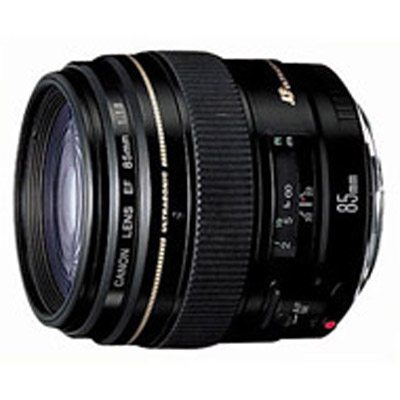 | Canon EF 85mm f/1.8 USM Pros: Sharpness, beautifully blurry, discreet and unobtrusive Cons: Powder enters, IS is missing Opinion: It was my first fixed focal point, still used in lire, I still have it, and it is perhaps my favorite target, though not what I use most. The yield is already good at TA, very good at f2.5-2.8, fantastic at f4-5.6-8, where it reaches peaks of incredible sharpness across the entire frame. Without distortion, it has a very small and very marginal vignetting, only to TA. Well contrasted, it returns saturated but realistic colors. The bokeh is beautiful, creamy, along with sharpness is its main value. I'm convinced that it's so blurry so soft to say "wow!" To those who look at the photos taken with this view. The three-dimensionality of the images is marked, almost palpable, I still remember some slides that looked like images in 3D. A "problem" related to these qualities is that using it becomes much more demanding with all the rest of the equipment: in fact in my case Is due toHe was my next unremitting quest for improvement of the kit, and my sudden abandonment of goals that I first considered good. An annoying defect is the tendency to accumulate dust inside. If it were not for this and had the IS would be perfect. RnI do not mean to say "it's not very versatile" because an 85mm you rate it as 85mm, you can not say that a mountain bike is unsuitable for the asphalt ... rnAggiorno after a lot of shots with the 5D mkII: Lens seems to have improved, compared to the 5D old, the impression is that the sensor density of 21 mpx allows the lens resolution to express itself better. The fact is that even at TA the details are sharp and sharp, and at f2.8 they become crazy, engraved incredibly. I have a series of faces shots where I do not have the ability to present - even before applying any sharpening - more engraved than those performed with 24-70 f4 L and with the 200 f.2.8 L diaphragm at f5.6 And sharpened. The dettaglI'm such that in practice sharpening does not work. I think the 85 f1.8 / 5D mkII combination is somewhat magical for some reason: I did not think about moving around looking at the eyes of the subject photographed, but with this coupled thing is what happens ... sent on June 28, 2017 |
 JuzaPhoto contains affiliate links from Amazon and Ebay and JuzaPhoto earn a commission in case of purchase through affiliate links.
JuzaPhoto contains affiliate links from Amazon and Ebay and JuzaPhoto earn a commission in case of purchase through affiliate links.May Beauty Be Everywhere Around Me